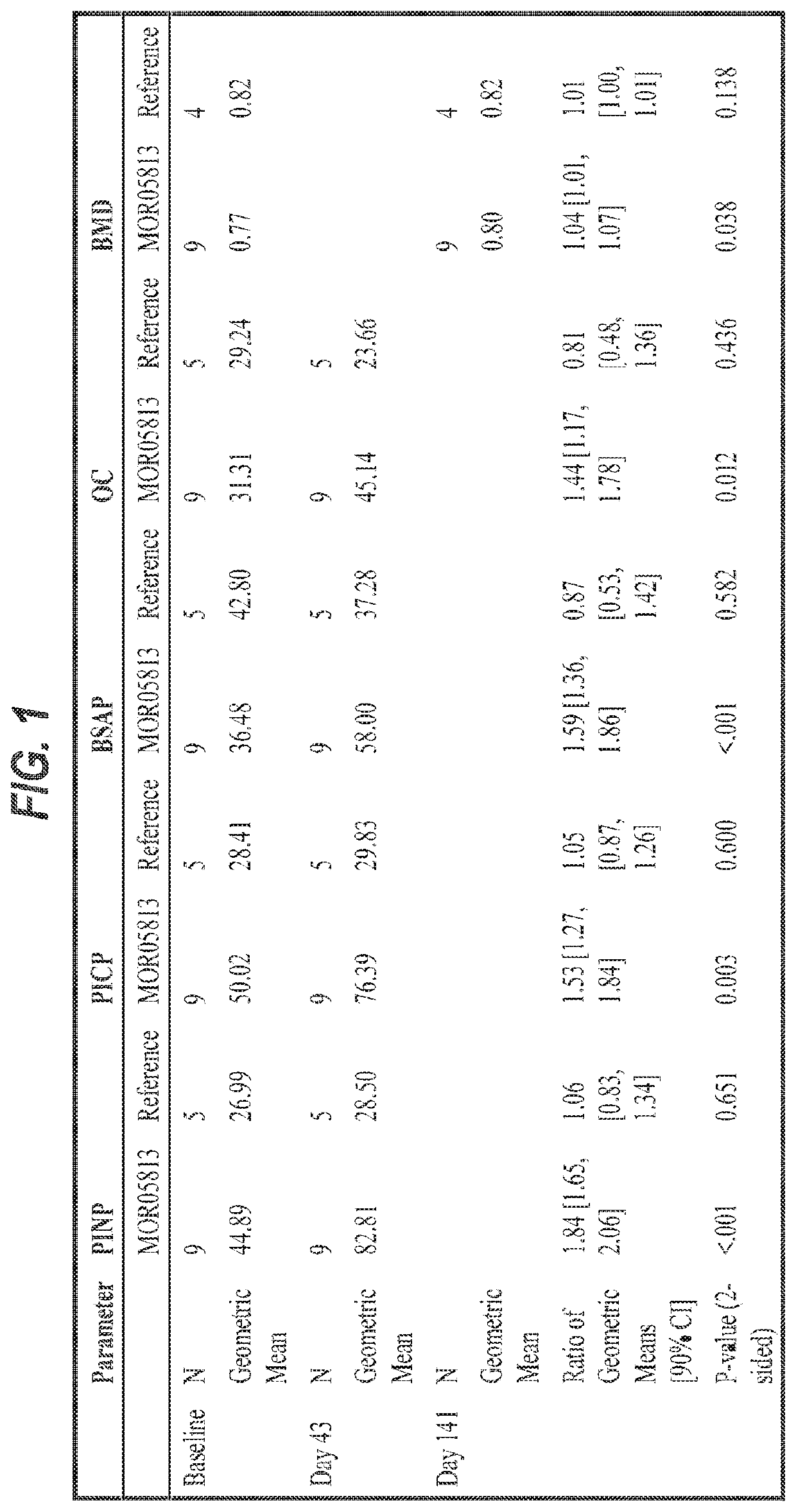Use of Anti-sclerostin antibodies in the treatment of osteogenesis imperfecta
an anti-sclerostin antibody and osteogenesis technology, applied in the field of anti-bodies, can solve the problems of reduced collagen production rate, muscle weakness of patients with oi, scoliosis, etc., and achieve the effects of reducing bone resorption, reducing bone resorption, and increasing bone formation
- Summary
- Abstract
- Description
- Claims
- Application Information
AI Technical Summary
Benefits of technology
Problems solved by technology
Method used
Image
Examples
example 1
[0198]This example describes a clinical trial to assess the use of an anti-sclerostin antibodyin the treatment of adult patients with OI. The patients were treated with three sequential intra-patient escalating doses of anti-sclerostin antibody BPS804, given as intravenous infusions separated by 2 weeks from each dose. An untreated reference group was enrolled as well for monitoring and observation of the natural OI disease progression with regard to changes in bone biomarker profiles. This trial was a randomized, open-label, intra-patient dose escalating study with an untreated reference group in 14 adult patients with moderate OI. Patients were randomized to the treatment group or the reference group at a ratio of 2:1.
[0199]Patients were administered every two weeks with escalating doses of the anti-sclerostin antibody: Week 1: 5 mg / kg, Week 3: 10 mg / kg and Week 5: 20 mg / kg. The treatment period was followed by an about 3.6 month follow-up period. Patients who were randomized to t...
example 2
[0210]A pharmacokinetic (PK) model was developed for BPS804 along with a pharmacokinetic (PK) and pharmacodynamics (PD) (PK-PD) model for circulating sclerostin effects after BPS804 administration based on a combination of clinical trial data and publically available data on other anti-sclerostin antibodies . The PK-PD model was linked to an existing systems pharmacology model to evaluate proposed dosing regimens for BPS804. Model simulations were used to provide guidance for dose selection and dosing interval over 1-2 years of treatment for typical OI patients. These included scenarios with different dosing considerations for the first year (e.g., comparison of dosage amount and QM (i.e. monthly) vs. Q3M (i.e. quarterly) dosing) as well as considerations for subsequent years (e.g., switching from QM to Q3M dosing).
[0211]Results:
[0212]The data demonstrated that BPS804 dosing regimens nearing maximal (>75%) inhibition of sclerostin provide near maximal responses in circulating sclero...
PUM
| Property | Measurement | Unit |
|---|---|---|
| weight | aaaaa | aaaaa |
| weight | aaaaa | aaaaa |
| time period | aaaaa | aaaaa |
Abstract
Description
Claims
Application Information
 Login to View More
Login to View More - R&D
- Intellectual Property
- Life Sciences
- Materials
- Tech Scout
- Unparalleled Data Quality
- Higher Quality Content
- 60% Fewer Hallucinations
Browse by: Latest US Patents, China's latest patents, Technical Efficacy Thesaurus, Application Domain, Technology Topic, Popular Technical Reports.
© 2025 PatSnap. All rights reserved.Legal|Privacy policy|Modern Slavery Act Transparency Statement|Sitemap|About US| Contact US: help@patsnap.com



